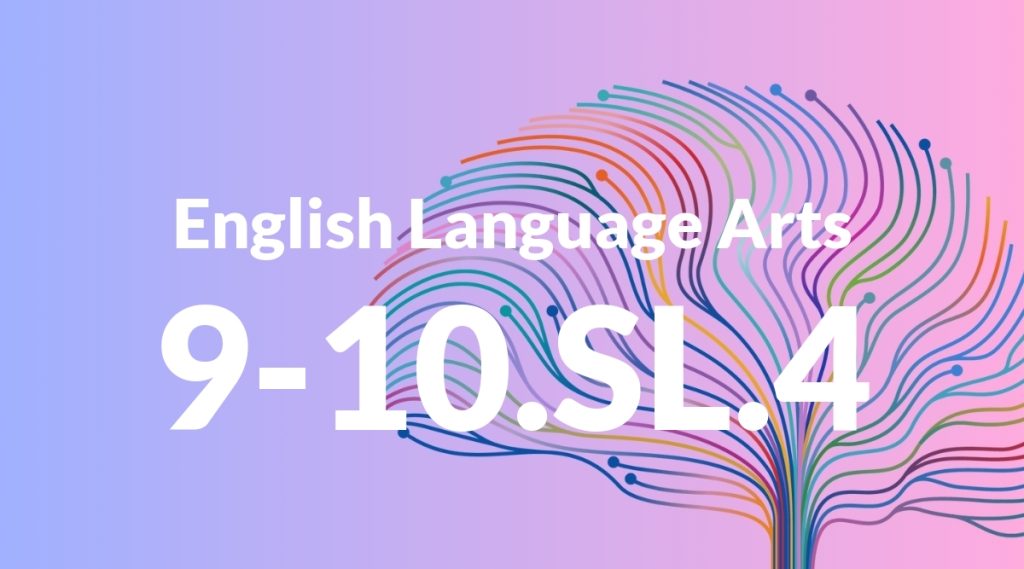Standard: 9-10.SL.4 – Present information, findings, and supporting evidence clearly, concisely, and logically such that listeners can follow the line of reasoning and the organization, development, substance, and style are appropriate to purpose, audience, and task.
Grade level: Grade 9-10
Subject: English Language Arts
Domain: Speaking & Listening
Teacher Overview
This standard emphasizes the importance of clear, concise, and logical presentation of information and evidence. It is crucial for students to develop these skills to effectively communicate their ideas and arguments in various contexts, from academic settings to real-world scenarios. Students need to have foundational skills in speech structure, basic research, and some experience with public speaking. These skills ensure they can organize their thoughts and present them coherently.
Mastering this standard will enable students to engage in more advanced public speaking activities, such as debates and persuasive speeches, and critically evaluate others’ presentations.
Common Misconception 1
A common misconception is that speaking louder or faster enhances the effectiveness of a presentation. This is incorrect because it can lead to misunderstandings and reduce the clarity of the message.
Intervention 1
Use exercises that focus on clarity and pacing, such as timed readings and peer feedback sessions, to help students understand the importance of delivering their message at an appropriate pace and volume.
Common Misconception 2
Another misconception is that more information automatically makes a presentation more convincing. This is not true because overwhelming the audience with too much information can dilute the main points and reduce the overall impact.
Intervention 2
Teach students to prioritize quality over quantity by selecting the most relevant and compelling evidence. Practice summarizing key points concisely to maintain the audience’s attention and enhance understanding.
Prerequisite Knowledge
Students should have a basic understanding of how to structure a speech, including an introduction, body, and conclusion. They should also be familiar with basic research skills to gather supporting evidence and have some experience with public speaking or presenting in front of an audience.
Subsequent Knowledge
After mastering this standard, students will be able to engage more deeply in persuasive speaking and debate, develop advanced presentation skills for a variety of audiences, and enhance their ability to critically evaluate the presentations of others.
Instructional Activities
- Practice delivering short speeches with peer feedback
- Analyze famous speeches for structure and effectiveness
- Create and present a multimedia project
- Participate in group discussions and role-playing scenarios
- Conduct peer reviews of presentations




